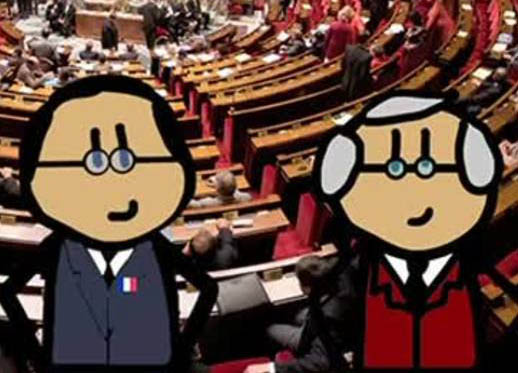The earth, our home
6th Grade Geography: Earth as Mans’ living space
Section C – Chapter 20, 21, 22, 23 (Greek Educational System)
Go to the lesson Chapter 20, Chapter 21, Chapter 22, Chapter 23
|
|
Materials for the lessonPapers to write the names of the Eskimos, Bedouins etc that are listed below. The children will write these papers and stick them on them.
|
Layout of the classroomThe desks are gathered in the four corners of the room and in the middle a desk or a chair is placed where the chairman of the Delegates Meeting will seat. The role of the President is advised to be done by the Teacher if he/she chooses for a student to do it then he/she should be close somewhere to help lead the conversation and keep it to the point. So, a conference room for the Delegates is formed. |
|
1st PhaseThis lesson is recommended to be done after the class has been taught the four chapters of Section C “The Earth as a Living Space of Man” Chapters 20,21,22,23.Life in the Deserts, the Arctic regions, the Tropical Forests and the Temperate Climate regions.It can be considered as a repetition lesson.The lesson may also obtain an ecological character if we want to get away from the Text-book and go further.The teacher asks for the children to be divided into four groups. They will be residents of the Arctic Regions, the Deserts, the Temperate Climate regions and Tropical Forests.He/she will sit in the middle and give the speech in succession to the four groups and with questions, answers and dialogue he/she will direct the meeting and the discussion to the desired point.They write the names given by the teacher, or that have emerged from a small survey, on labels that are stuck on them. |
|
2nd PhaseThe scenario we propose to you says that the “Delegates” decide to meet to discuss and work together to solve the problems Earths’ problems. Many have been created from Humans (one to another) and their lifestyle.The teacher announces the beginning of the meeting.An indicative dialogue:President/ Teacher: (With a grand style) Dear friends, we met here today to get to know each other and express our problems. Our people are so far away from each other that we do not even know our names. So let’s say our names first.Familiarization: The Delegates get to know each other by name.Here are some examples: Eskimos: Inuit, Saami, Eira, Lap, Vonil, Aldo, Covadzhi Bedouins: Roula, Al-Murah, Bani Chalid, etc. Tropical countries and Regions: Bantu Akba, Dorobo, Neri, Ebu, Garisa. |
|
3rd PhasePresident/ teacher: (in the same style) And now that we have met, let’s talk about how is our everyday life, our jobs and occupations… etc.They exchange information resulting from the lesson and expressed in class during previous lessons such as:How does the sun shine in their regions.How some have 6 months of daylight and 6 months f dak night (Eskimos).How are their homes (Eskimos, Bedouins).What is their food (Bedouins, Eskimos).What jobs do they do (Bedouins, Eskimos.)How do they transport themselves?The level of their lives (differences etc); |
|
4th PhaseFurther on, and under the guidance of the President / Teacher the discussion, the proposals can go further.This can affect issues such as:1. Global warming and the melting ice in the Arctic regions.2. Overflowing phenomena from the rise of ocean water levels if the ice melts (Temperate Climate regions will be directly affected and the cities of the Developed world will drown)3. Overexploitation and lifestyle in cities with the planet’s pollution by the Industries.The pollution of the sea, the extinction of animals etc. Clean forms of energy and numerous more.5th PhaseWe would also recommend, before the above and when considering the individual lessons of Section C “Earth as a Living Space of Man” to do with the students some preparation activities as a prologue for all the above Creative Lesson. The lesson in chapters 20, 21, 22, 23 suggests such group activities. |


 SmartOWL
SmartOWL